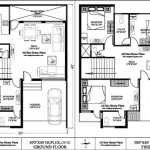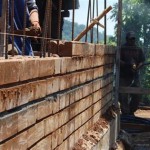Essential Aspects of House Drainage Plans
An effective house drainage plan is crucial for ensuring proper water management and preventing costly issues such as flooding, dampness, and structural damage. Here are some essential aspects to consider when creating a drainage plan for your home:
1. Site Assessment and Slope Analysis
Begin by evaluating the topography of your property. Determine the slope of the land to direct water away from the house. The ideal slope for drainage is 1-2% away from the building.
2. Roof Drainage System
Gutters and downspouts collect rainwater from the roof and redirect it away from the foundation. Ensure gutters are properly sized and clear of debris. Consider downspout extenders to discharge water farther from the house.
3. Surface Drainage
Manage surface water runoff from driveways, patios, and walkways. Install French drains, swales, or rain gardens to collect and infiltrate excess water.
4. French Drains
French drains are underground perforated pipes that collect and drain water from the soil around the foundation. They are used to prevent water from seeping into the basement or crawlspace.
5. Downspout Discharges
Determine appropriate discharge locations for downspouts. Avoid directing water towards driveways or patios, as this can lead to erosion and damage. Consider drywells or underground storage tanks to collect and infiltrate excess water.
6. Drywells
Drywells are underground perforated containers that collect and infiltrate rainwater from downspouts. They are a suitable option if the soil has good permeability.
7. Sump Pumps
In areas with heavy rainfall or poor soil drainage, sump pumps may be necessary to remove water from basements or crawlspaces. Sump pumps are installed in sumps, which are low points in the foundation, and pump water out when it reaches a certain level.
8. Backwater Valves
Backwater valves prevent sewage from flowing back into the house from municipal sewer lines. These valves are installed in the drainage system and should be regularly inspected and maintained.
9. Plan Review and Permits
Before implementing any drainage plan, it is essential to have it reviewed and approved by a qualified contractor or engineer. This ensures that the plan meets local building codes and regulations.
10. Regular Maintenance and Inspection
Regular maintenance is crucial to ensure the effective and long-lasting performance of the drainage system. Clean gutters, inspect downspouts, and check for any leaks or blockages in the drains. Schedule periodic inspections by qualified professionals to address any issues promptly.
Additional Tips
- Consider using rain barrels to collect rainwater for irrigation or other non-potable purposes.
- Plant trees and shrubs with deep root systems to absorb excess moisture from the soil.
- Use permeable materials for driveways and patios to allow water to infiltrate into the ground.
- Avoid grading the land towards the house, as this can lead to water accumulation.

Sanitary Drainage Design In Buildings Building House Drains Hidra

Modern House Sanitary Installation Plan

House Drainage Important Components Used In System

Self Build House Extension Drains Planning

3 Bhk House Plumbing And Drainage Layout Plan Dwg File Cadbull

Residential Drainage Life Of An Architect

Casa De York The Drainage Plan

House Drainage Layout Explanation

Drainage Layout Responsibility Lanes For Drains

How To Obtain Before You Dig Plans








